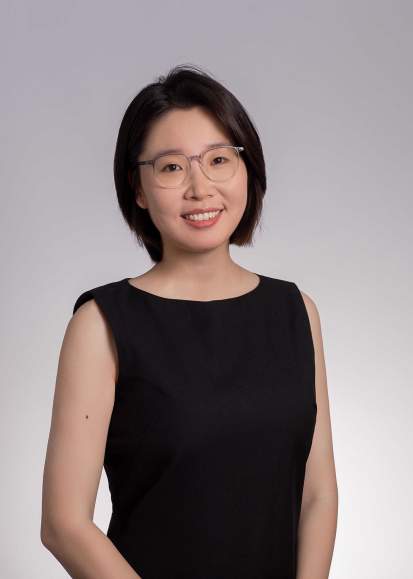
Yin Gao
Ying Gao, Associate Researcher at the Institute of Automation, Chinese Academy of Sciences. In 2009, she obtained a Bachelor's degree from the School of Psychology at Southwest University, and in 2012, a Master's degree from the same institution. She earned her Ph.D. in 2018 from the Department of psychology at Otto-von-Guericke University of Magdeburg, Germany. From 2018 to 2020, she worked in the Technical R&D Department at the SAVIR Vision Restoration Center in Germany. In 2020, she conducted postdoctoral research at the Department of Medical Psychology at Magdeburg University, Germany. In 2021, she joined the Institute of Automation at the Chinese Academy of Sciences to engage in scientific research.
Her research focuses on the assessment of perceptual and cognitive functions using tools such as psychological scales, eye-tracking, and EEG, as well as on the development and application of function-enhancement methods based on transcranial electrical stimulation. She has published over 10 papers in notable journals in related fields, such as Investigative Ophthalmology & Visual Science, Cognitive Neurodynamics, and Restorative Neurology and Neuroscience. She holds one national invention patent.
She has been the principal investigator for one National Natural Science Foundation of China (NSFC) Youth Science Fund project and one China Postdoctoral Science Foundation project. Additionally, she has participated in key national research projects, such as the National Key R&D Program, the NSFC Key International Cooperation Research Project, and the Beijing-Tianjin-Hebei Basic Research Cooperation Project. She serves as a member of the Brain-Computer Interface and Neurorehabilitation Research Group within the Neuroregeneration and Repair Professional Committee of the Chinese Research Hospital Association. Her research outcomes have been piloted in several collaborative hospitals.
Brain computer interface and neuromodulation
1. National Natural Science Foundation of China, Youth Science Fund Project, 62301560:"Research on the Assessment of Visual Function and Brain Networks in Early Glaucoma Based on EEG and Eye Movement," January 1, 2024, to December 31, 2026, 300,000 CNY, ongoing, Principal Investigator.
2. China Postdoctoral Science Foundation, 70th General Grant, 2021M703490: "The Impact of Microsaccades on Hemianopia Visual Perception and Functional Brain Network Mechanisms," November 2021 to December 2023, 80,000 CNY, concluded, Principal Investigator.
3. National Natural Science Foundation of China, International (Regional) Cooperation and Exchange Project, 62020106015: "Research on Brain Network Regulation and Visual Restoration in Glaucoma Patients," January 1, 2021, to December 31, 2025, 2,300,000 CNY, ongoing, Participant.
4. Ministry of Science and Technology, Key Research and Development Program, 2023YFF1203501: "Key Technologies for High-Precision Decoding of Visual Spatial Information," November 2023 to October 2026, 3,500,000 CNY, ongoing, Participant.
5. Beijing Municipal Science and Technology Commission, Beijing Science and Technology Star Program Interdisciplinary Project, 20230484460: "Research on the Response Mechanisms of Visual Pathways in Transcranial Alternating Current Stimulation for Visual Restoration in Glaucoma Patients Based on MRI," October 2023 to October 2025, 250,000 CNY, ongoing, Participant.
[1] Gao, Y., He, H., Sabel, B. A. (2024) Enhanced long-range communication among large scale brain networks during the pre-microsaccadic period. In 46th Annual International Conference of the IEEE Engineering in Medicine and Biology Society (EMBC).IEEE.
[2] Gao, Y., Huber, C., Sabel, B. A. (2018) Stable microsaccades and microsaccade-induced global alpha band phase reset across the life span. Investigative Ophthalmology & Visual Science. 59(5): 2032-2041.
[3] Gao, Y., Sabel, B. A. (2017). Microsaccade dysfunction and adaptation in hemianopia after stroke. Restorative Neurology and Neuroscience. 35(4):365-376.
[4] Sabel, B. A., Gao, Y., & Antal, A. (2020). Reversibility of visual field defects through induction of brain plasticity: vision restoration, recovery and rehabilitation using alternating current stimulation. Neural regeneration research, 15(10), 1799-1806.
[5] Sabel, B. A., Cárdenas-Morales, L., & Gao, Y. (2018). Vision restoration in glaucoma by activating residual vision with a holistic, clinical approach: a review. Journal of Current Glaucoma Practice, 12(1), 1.
Received multiple scholarships and the honor of Outstanding Graduate during Bacholar, Master and Doctoral study. Awarded Second Prize for Papers in New Medicine and Biomedicine during postdoctoral work.
Copyright Institute of Automation Chinese Academy of Sciences All Rights Reserved
Address: 95 Zhongguancun East Road, 100190, BEIJING, CHINA
Email:brain-ai@ia.ac.cn